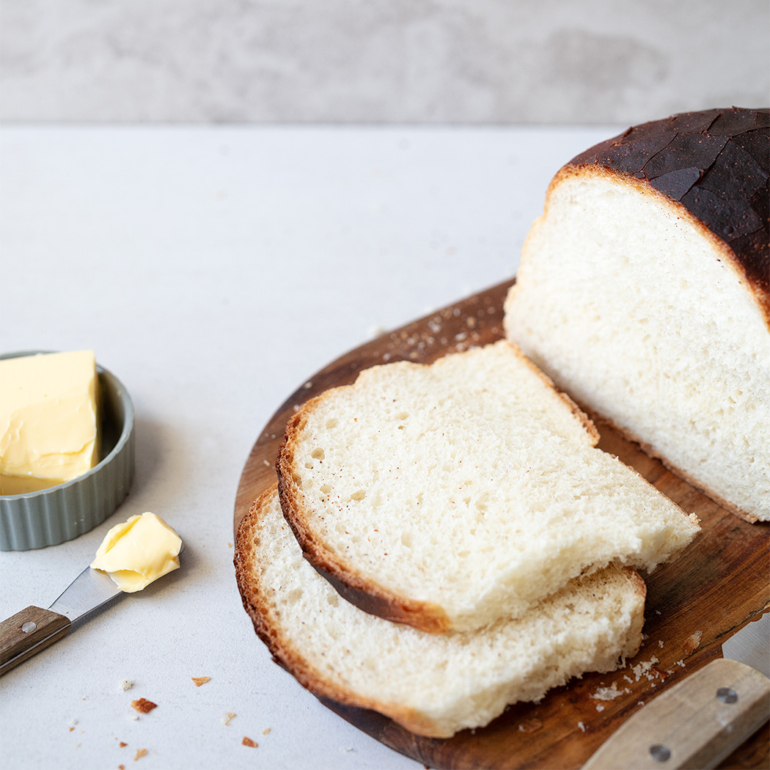Makes 4 loaves
adjust servings:
Tick the ingredients you need to add your shopping list.
- Mix the flour and salt in a clean bowl. Crumble the yeast into the flour, then add the buttermilk. If you are using buttermilk directly from the fridge, you will find that the bread will take longer to prove. This isn’t a bad thing; the longer the bread proves, the more the flavour develops. However, it is important to maximise proving without over-proving.
- Bring the dough together with your hands or with a spatula. Turn the dough out on a clean surface and knead for approximately 10 minutes or until the windowpane effect has been achieved. The dough should be soft and elastic.
- Place the dough in an oiled bowl, cover with a damp tea towel or wrap in cling film and leave to prove for 90 minutes.
- Turn the proved dough out and knock it back. Divide the dough into four equal portions, approximately 450g each. Shape each portion of dough into a rough round and leave them to rest on the counter for 10 minutes: we call this bench rest and allows the gluten to relax before final shaping.
- Traditionally, batch bread is shaped onto a baking tray surrounded by a wooden frame. The frame supports the dough, ensuring high sides to your bread. The bread can be baked without the frame; all that will happen is that the final loaf may not have the same height as when baked within the frame. However, the flavour will still be great. A large square cake tin also works well to mimic this frame; alternatively, just shape the loaves without a frame.
- Once the dough has rested, roll each portion of dough into a tight round and place onto your baking tray in a 2x2 pattern, allowing each portion of dough to just touch each other. Cover and allow to prove again for 60-90 minutes. Just before baking, the dough should be well risen with a nice bounce to the dough when touched.
- Preheat the oven to 220˚C/200˚C fan/gas mark 7. Place a roasting tray into the base of the oven.
- When ready to bake, place the loaves into the oven and pour water from a boiling kettle into the hot roasting tray; this should release a blast of steam.
- Bake the loaves for about 35-40 minutes. Resist the temptation to get stuck in until the loaves cool, then enjoy.
For other delicious bread based recipes click here.
Nutrition Facts
Per Serving: 125kcals, 0.5g fat (0.2g saturated), 25.2g carbs (1.2g sugars), 4.2g protein, 1g fibre, 0.269g sodium
Popular in Irish
 Irish coffee affogato by EUROSPAR
Irish coffee affogato by EUROSPAR


